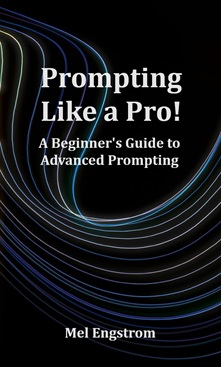If research is a key part of your work or studies, you might wonder—can AI really help? The answer is yes, and it’s a game-changer.
The secret: Train ChatGPT to work for you. Ask it to “cite sources for every claim in this output,” and you’ll instantly get references to verify, cutting down hours of manual searching.
No more endless scrolling through databases or flipping through textbooks. Research can be fast, engaging, and even fun. With ChatGPT, you’re not just collecting information; you’re refining ideas and accelerating your success.
Let’s explore how ChatGPT can streamline your research and deliver powerful results.
1. Spark Inspiration: Brainstorming with ChatGPT
The blank page. The blinking cursor. We’ve all been there. ChatGPT can be your brainstorming partner, helping you turn vague ideas into structured research topics in seconds.
🔹 Try this prompt:
“I’m researching the impact of social media on mental health. Can you suggest specific subtopics I could explore?”
💡 Example Response:
- The effects of social media on self-esteem and body image
- Links between social media and anxiety or depression
- Social media addiction and its impact on sleep
- The role of FOMO (fear of missing out) in mental health
With just one prompt, you can zero in on a compelling research angle, like “How does social media comparison influence body image in teenagers?”—making your project both relevant and engaging.
2. Build a Roadmap: Structuring Your Research
Having a great topic is one thing; structuring your research is another. A strong outline keeps you focused and prevents information overload. ChatGPT can map out your paper in seconds.
🔹 Try this prompt:
“Can you help me create an outline for a paper on how social media comparison affects teenage body image?”
💡 Example Response:
I. Introduction
- Background on social media and body image
- The problem: How social media comparison affects teenagers
- Thesis statement: This study explores the link between social media comparison and body image dissatisfaction.
II. Literature Review
- Overview of existing research on social media’s influence
- Studies on teenage body image and self-esteem
- Gaps in the research
III. Methodology
- Research design (surveys, interviews, or data analysis)
- Target population: Teens aged 13-18
- Data collection methods
IV. Results & Analysis
- Key findings
- Statistical analysis (if applicable)
- Interpretation of results
V. Discussion
- Implications of the findings
- Study limitations
- Suggestions for future research
VI. Conclusion
- Summary of key findings
- Restate thesis
- Final thoughts and implications
With this framework in place, you can confidently move forward with research, knowing exactly what you need to find.
3. Dive Deeper: Using ChatGPT for Research
Now for the fun part—digging into the data. While ChatGPT can’t replace peer-reviewed studies, it’s a fantastic shortcut for summarizing key ideas, organizing thoughts, and identifying knowledge gaps.
🔹 Try this prompt:
“Summarize key studies on how social media comparison affects body image in teenagers.”
💡 Example Response:
- Study 1: Found that excessive Instagram use correlates with lower self-esteem in teenage girls.
- Study 2: Highlighted how TikTok’s algorithm reinforces body image pressures.
- Study 3: Showed that social media detoxes lead to improved body satisfaction.
Pro Tip: Always verify information with original sources before citing it in your work.
4. Research for Everyone: Customizing ChatGPT’s Assistance
Whether you’re a scientist, historian, or tech analyst, ChatGPT adapts to your research style. Tailor your prompts to fit your field:
- “Help me explore recent advancements in [specific field].”
- “Assist in refining my research question about [topic].”
- “What are key arguments on both sides of [controversial issue]?”
These simple adjustments ensure you get the most relevant and insightful responses.
5. Polish Your Writing: ChatGPT as Your Editing Assistant
Great research isn’t just about what you find—it’s about how you present it. ChatGPT can help refine your writing, making it clearer and more impactful.
🔹 Try this prompt:
“Can you improve this sentence? ‘The results indicate a significant correlation between social media use and body image concerns.’”
💡 Example Response:
- “Our findings reveal a strong link between social media use and negative body image among teenagers.”
- “The data suggests a significant association between time spent on social media and body dissatisfaction.”
Small tweaks like these can elevate your research from good to great.
Disclaimer: If you’re using this for a school paper, please be aware of whether or not your school considers any AI written text to be plagiarism.
6. Overcoming Research Challenges with AI
Every researcher hits roadblocks. ChatGPT helps turn challenges into learning moments.
🔹 Try prompts like:
- “Help me overcome challenges in [specific research hurdle].”
- “How can I reframe my argument to make it stronger?”
- “What are some counterarguments to [my claim]?”
This adaptive approach makes AI an invaluable tool for tackling research difficulties head-on.
Final Thoughts: Research Smarter, Not Harder
Research doesn’t have to be overwhelming. With ChatGPT, you can spark ideas, structure your work, dive into data, refine your writing, and solve challenges—all while saving time.
And the best part? All that extra time means you can conduct even more in-depth research than ever before. AI is reshaping the way we work and learn—embracing it now puts you ahead of the curve.
So why not give it a shot? Research smarter, work faster, and open new doors with ChatGPT.
You got this.
Love,


